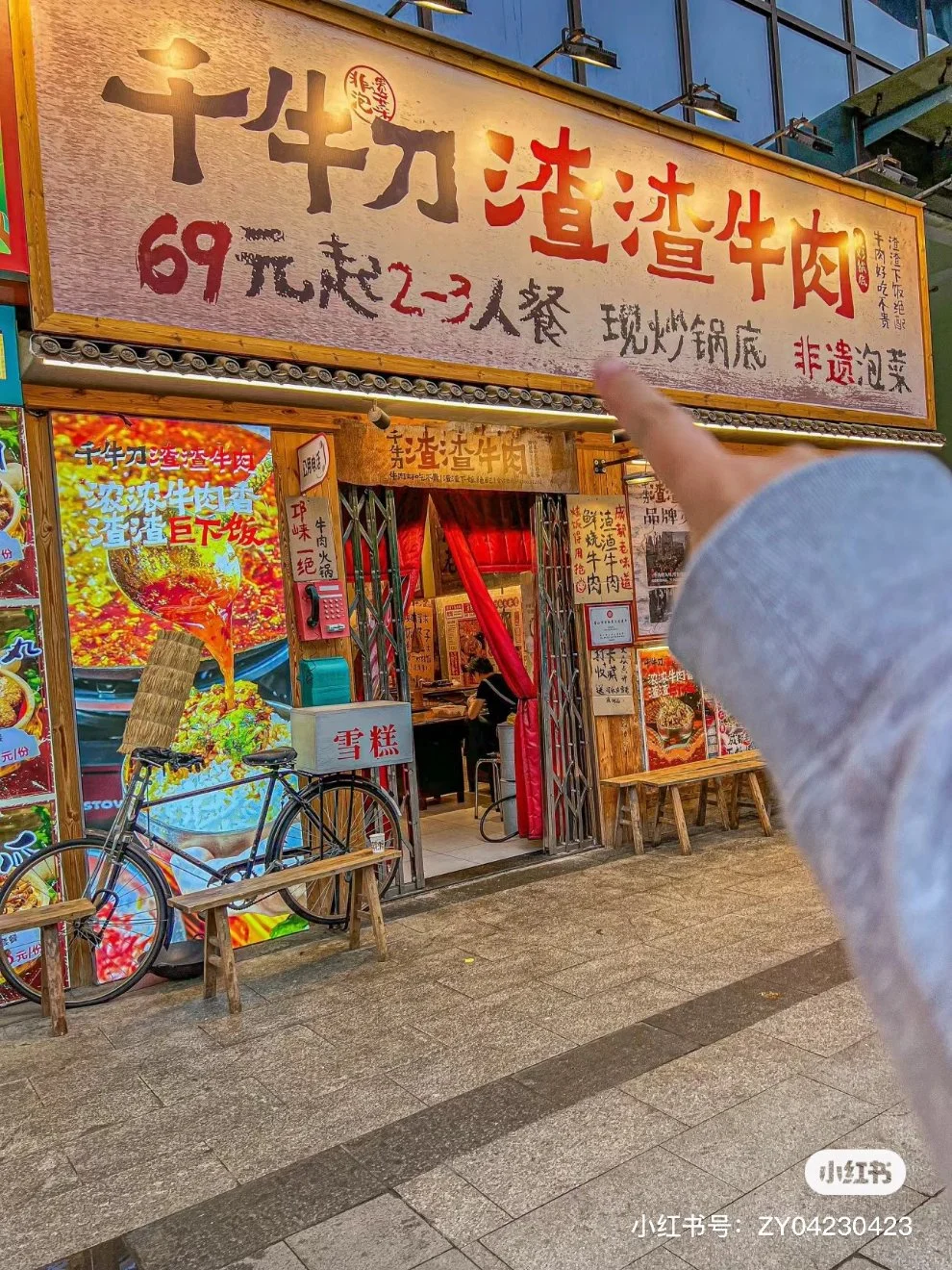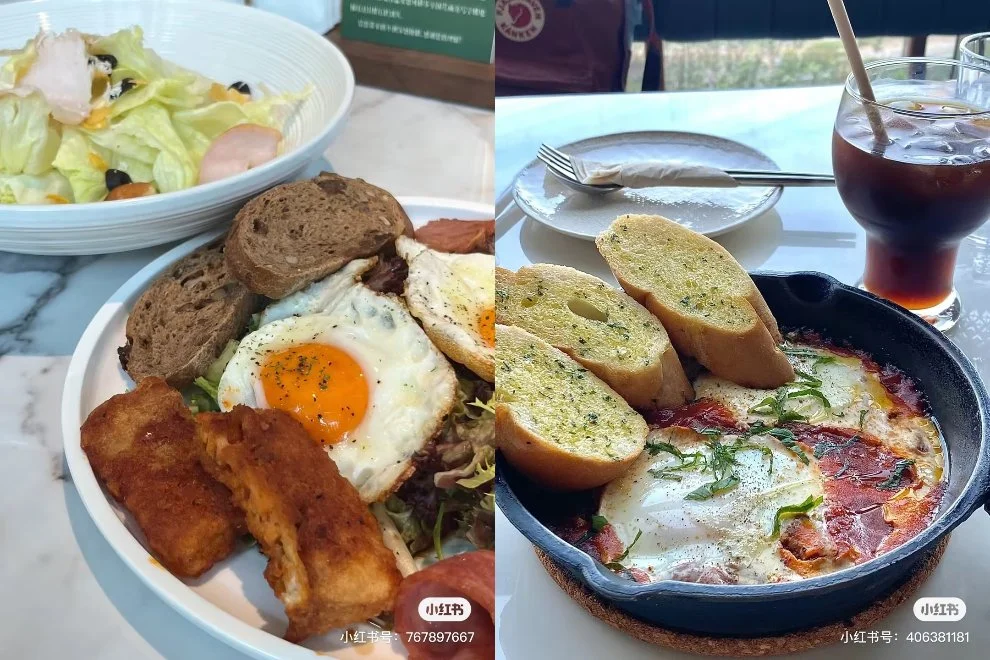Can Chinese herbal bread alleviate young people’s “health anxiety”
The slogan on the barricade of an unopened restaurant near the China World Trade Center area recently caught the attention of consumers: "Don't rush! Chinese herbal bread (养生吐司) coming out soon."

The slogan about "Chinese herbal bread(养生吐司)" on the barricade of a bakery has piqued the curiosity of many consumers. Images are from RED.
After experiencing the dazzling array of bread in China’s big cities, many people are still curious about what "Chinese herbal toast" is. In fact, as early as last year, on the first floor of the First Teaching Hospital of Tianjin University of Traditional Chinese Medicine, a bakery named "Medicinal Food Shop(药食坊)" opened, offering signature products such as " Donkey-hide gelatin bread, astragalus bread and lotus leaf cooling bread," among others. The interesting fusion of Chinese and Western styles has attracted many young people.

Many netizens have expressed that the average price for a single item is around ¥20 ($2.80), and its appearance doesn't differ much from regular bread, but it is full of creativity. Images are from RED.
Similarly, in Zhengzhou, there is a shop called "Zhongjing Life" that specializes in health food made from Chinese medicinal ingredients. It offers unique products such as hawthorn dragon fruit bread, tangerine peel chocolate cake, and yam oat milkshake, all of which combine health benefits with trendy appeal.

The interior design of Zhongjing Life's stores is inspired by traditional Chinese medicine shops. Images are from RED.
In response to past consumer skepticism online, many stores have stated that the medicinal herbs added to the bread can all be found on the list of "Homology between medicine and food" published by the National Health Commission. In other words, all the raw materials are approved by health authorities and can be added to the products sold in the stores as ingredients. However, some stores also emphasize, to keep consumers rational, that "bread does not cure illnesses" and encourage everyone to consume rationally.

A bakery prominently displays a product statement in a visible area, accompanied by a model of a bread. Images are from RED.

Chinese herbal bread from other cities in China stands out with its distinctive appearance and unique store decor. Images are from RED.
A concise yet holistic summary of March 2025’s key marketing developments in China, highlighting valuable insights and their implications for brands.
A concise yet holistic summary of February 2025’s key marketing developments in China, highlighting valuable insights and their implications for brands.
From its roots in TCM to the playful emergence of Poop Map, China’s evolving attitude toward bowel health demonstrates an openness to blending ancient wisdom with modern tech-savvy trends
Xianyu has evolved from a second-hand marketplace into a hub for youth culture, side hustles, and digital innovation, offering valuable insights for foreign brands in China
Jack Ma launched New Retail with a roar in 2016 starting a scramble for the New Retail crown on both sides of the Pacific. The buzzword has since fizzled out and Alibaba has divested in much of its bricks & mortar retail properties, but the need to rethink retail is more important than ever. Here's why...
Chinese sanitary pad brands face backlash over misleading lengths and pH standards akin to tablecloths, sparking consumer boycotts and calls for reform. The willingness to talk about once-taboo products shows a new era of consumer pushback and could provide advantages for cross border products
Social media feeds increasing filled with “rough life” posts, alongside the popularity of more authentic retail spaces are just two examples of how Chinese consumers are seeking more real, less polished marketing
As Chinese consumers increasingly prioritize health and wellness, fresh milk and fruit tea brands are stepping up, with HEYTEA standing out prominently. This article explores HEYTEA's health-focused marketing strategies and provides insights for brands looking to cultivate health-oriented perceptions.
China's seniors are one of the most anticipated demographics, yet one of the least tapped by foreign brands. Preferences, behaviour and influences are all changing, helping to make them more accessible for foreign brands
Traditionally, yoghurt has been seen as a symbol of purity, health, and deliciousness. But what would happen if we blended it with the flavours of some famous regional Chinese cuisines?
Corn-based coffee and drinks are trending in China, attracting wellness-focused consumers with their creative versatility, health appeal, and nostalgic flavours. Stable supply chains and regional pride further enhance their popularity, turning traditional corn into a modern beverage hit.
In mid-August, HEYTEA announced the launch of the "caffeine traffic light", disclosing the caffeine content of their fresh drinks. This approach helps consumers better manage their daily caffeine intake, raises the competitive standard within the milk tea industry and symbolises the need for personalisation to needs.
Chinese herbal bread combines traditional Chinese medicinal ingredients with Western breadmaking techniques. While its appearance is similar to regular bread, its recipe draws from familiar traditional Chinese medicine ingredients known to young people in China. Coupled with carefully crafted marketing messages, many young individuals feel that consuming this bread can alleviate "health anxiety."
With the Mid-Autumn Festival approaching, mooncakes—an essential traditional treat—are once again showcasing innovative and exciting variations. This round up of intriguing and unusual mooncakes may provide inspiration for product development beyond the traditional treat!
With the advancement of AI, many industries have successfully reduced costs and increased efficiency, and the food & beverage sector has seen the emergence of many innovative and data-driven products. However, are AI-developed foods really as good as we imagine yet?
As the “lying flat” lifestyle grows among Chinese workers looking to unwind, more urbanites are seeing the allure of cruises return. This stress-free approach to travel fits perfectly with the cruise experience, leading more Chinese to choose cruises as their ideal escape.
In April, Lin Yuanchun birch water became the top-selling beverage on Douyin, surpassing brands like Coca-Cola and Oriental Leaf. Birch water continues to gain popularity, driven by its health benefits and the aggressive marketing on social media.
Just like us, pets need to beat the heat during the sweltering summer months. From stylish cooling mats and pads, to ice collars and breezy apparel, a wave of functional and fashionable products has been heating up China's pet supplies market, creating promising seasonal opportunities.
Durian-related food and drinks are currently getting a lot of attention on Chinese social media. Here are some examples of how brands and restaurants are incorporating durian into their offerings
Earlier this month, China's leading chain coffee brand, Luckin, launched a new crossover product called Light Jasmine milk tea. Due to its striking similarities with CHAGEE's signature product, bóyájuéxián, many netizens believe Luckin is essentially "replicating" it.
Xiaohongshu/RED launched the "5-Minute Workout Boost" campaign to coincide with the Paris Olympics and summer vacation, making exercise accessible and easy to fit into daily life.
As competition in the Chinese dining market intensifies once again, a number of low- and mid-range brands are directly writing their prices on their storefronts. Although this move is direct, the results have seen brands begin to imitate this set of marketing methods.
Just as foreign brands often overlook brand protection in China, BYD has done it in the West. Yet in China, the channels to product brand IP have never been better
As mental health issues such as work stress, unemployment and poverty continue to come to the fore, more and more young Chinese are pursuing emotional healing.
Most western brands are only scratching the surface when localising for China, missing opportunities such as creating China-relevant occasions or appealing to Chinese senses. Here are six areas to provide inspiration
The Chinese-style wellness trend has created new business opportunities by combining traditional Chinese medicine with milk tea, dining, offline fairs, and AI. There are also suggestions for brands’ marketing you can’t miss…
This spring, many upscale dining brands have started offering breakfast options, aiming to attract more customers by expanding their business lines.
A bakery in Hangzhou drew many customers with its "9.9 Yuan" marketing slogan in May. Since then, numerous low-price bakeries have popped up across the country.
China big ecommerce festivals act as a barometer for consumer sentiment, but this year’s 618 also provides wider lessons into what is working with Chinese consumers right now






























Chinese traditional wellness practices such as sand therapy, Sanfu moxibustion, and herbal or botanical beverages are trending this summer. Chinese consumers are increasingly drawn to health regimens rooted in ancient wisdom.